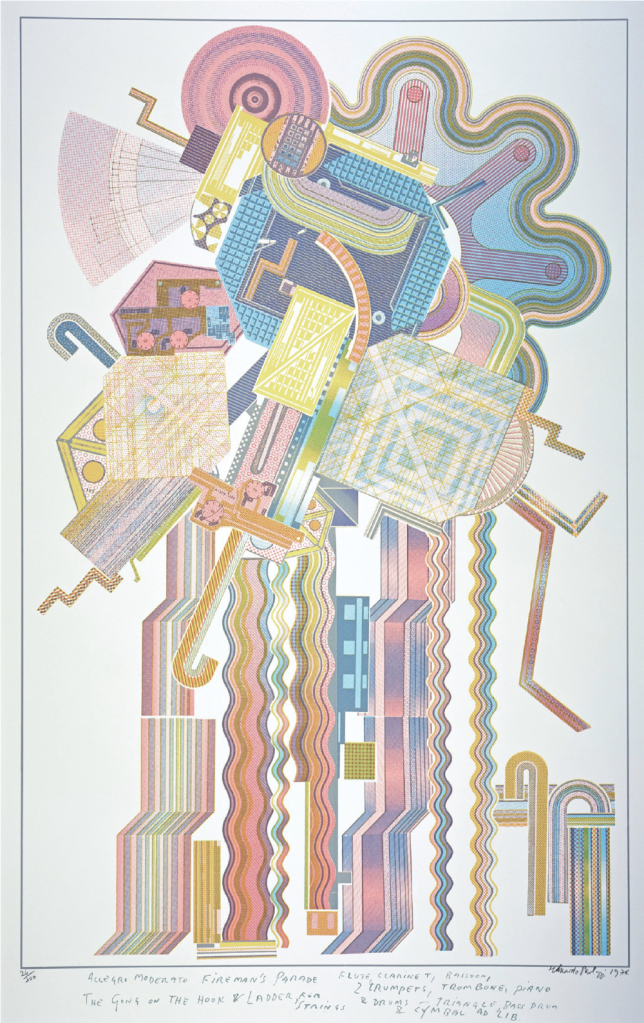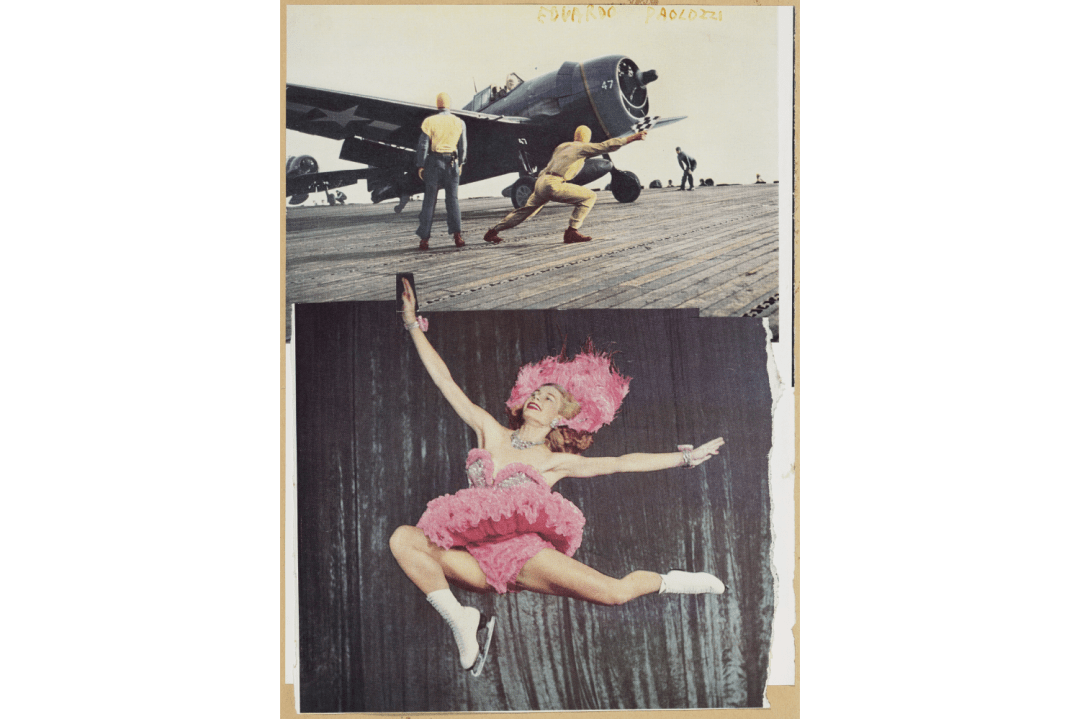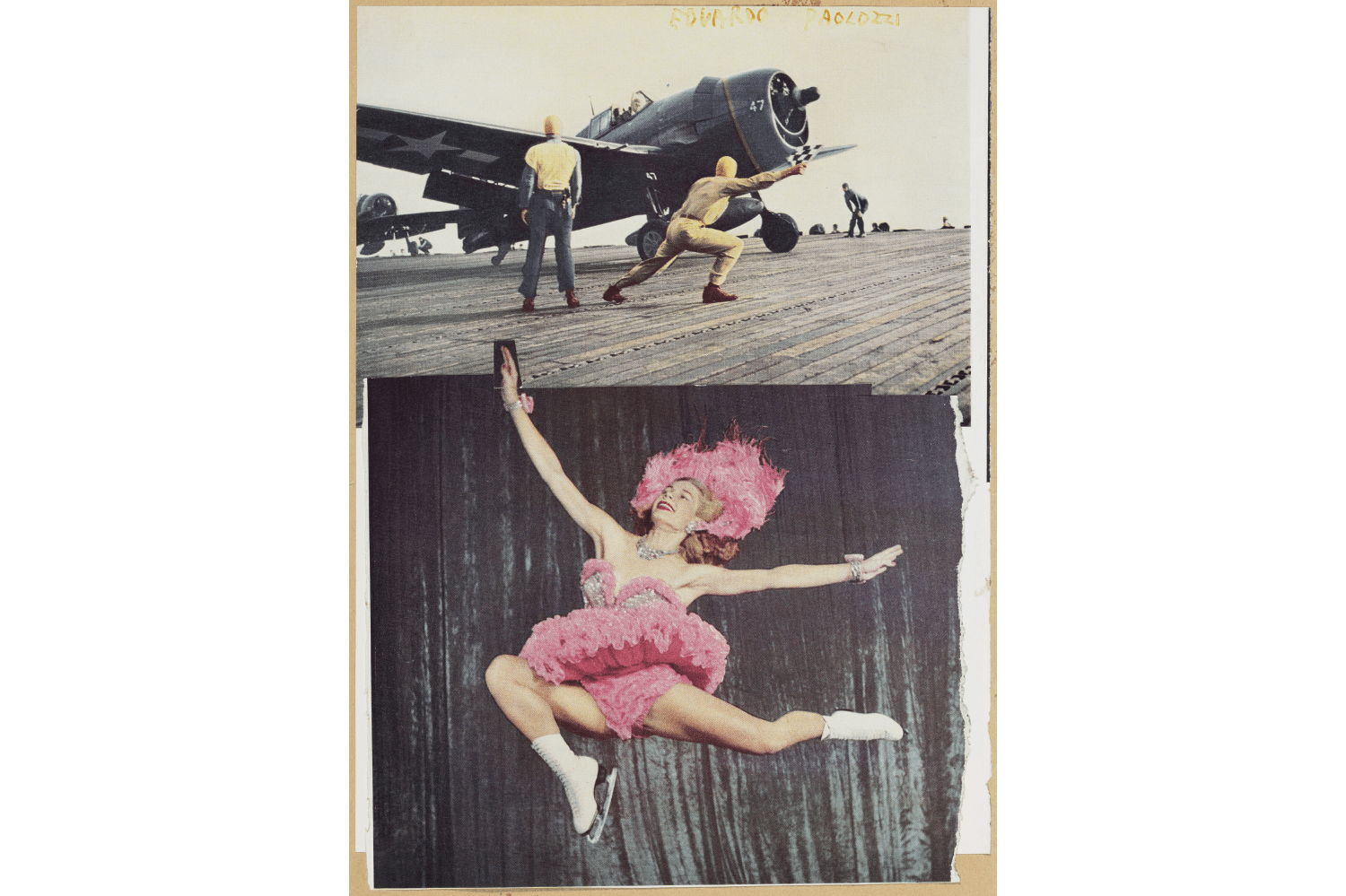On 10 June 1940, a riot erupted in Edinburgh as a 2,000-strong mob swarmed the streets, hell-bent on revenge. Their targets were barbers, delis and ice cream parlours; anything or anyone Italian. Mussolini had just entered the war and the mob scented blood. The police eventually quelled the violence and the city’s more sympathetic locals helped sweep up the broken glass and mop up the spilled wine. But nearly half of the city’s 400 Italian Scots were rounded up under Winston Churchill’s order to ‘collar the lot’, and sent to internment camps. Among them was the 16-year-old Eduardo Paolozzi, who was locked up at Edinburgh’s Saughton prison.
While Paolozzi was creating pop mash-ups, Warhol was still making whimsical illustrations of shoes
It could have been worse. Paolozzi’s father, grandfather and uncle were sent to Canada on the SS Arandora Star. The ship sailed without Red Cross civilian identification and on 2 July 1940, it was torpedoed off the coast of Donegal by a German U-boat. More than 800 of the Italian, German and Jewish passengers on board drowned, including the three Paolozzi men. Survivors reported British soldiers shooting holes in lifeboats to prevent the escape of prisoners. The young Paolozzi was conscripted into the Pioneer Corps before faking schizophrenia to secure his discharge. Following a period in a mental hospital, he took up a place at the Slade School of Art in 1944 and began an astonishing career that would see him lead the British pop-art revolution and become one of the country’s favourite public artists.
To mark the centenary of his birth, the National Galleries of Scotland are celebrating Paolozzi in his home city with an exhibition of 60 works that chart his artistic evolution and celebrate his cultural impact.
Emerging from the trauma of his wartime experience into the dim world of austerity, the young Paolozzi was seduced by the Technicolor glamour of America, that entered European consciousness through the glossy magazines that he would slice into collages. He first displayed this found imagery in the form of a slideshow in his 1952 lecture Bunk! at the Institute of Contemporary Art. Later they evolved into screenprints. It was a modern way of seeing, informed by the pictorial bombardment of TV, cinema and photojournalism. To Paolozzi, the American magazine ‘represented a catalogue of an eclectic society, bountiful and generous… an art form more subtle and fulfilling than the orthodox choices of either the Tate gallery or the Royal Academy’.
With these pictorial assemblages, Paolozzi mapped the post-war psyche through pin-up girls, US motors, lipsticks and domestic appliances. At other times he forced the pop into a collision with a darker reality, juxtaposing an airforce crew with a leaping dancer in ‘Take-Off’ (1950) to inject a jolt of uneasy frisson in the viewers’ response. This proto-pop art was visionary. While Paolozzi was creating his energetic mash-ups of pop iconography and materialistic consumer totems and experimenting with screenprints in the early 1950s, Andy Warhol was still making whimsical illustrations of shoes.
Paolozzi matured as an artist among a small group of Scottish radicals, all based in London and grouped around the abstract painter William Johnstone, who recruited the painter Alan Davie, the sculptor William Turnbull and Paolozzi to teach at the Central School. Together they led a sort of renaissance-in-exile in Scottish art. Influenced by futurism, art brut, dada and surrealism, they wanted to democratise art, reclaim it from the academies and give it back to the people.
In 1952, Paolozzi co-founded the Independent Group, a gathering of ambitious young artists, critics and architects, including Turnbull and Richard Hamilton, centred around the ICA. Their most significant show, This is Tomorrow at the Whitechapel Gallery in 1956, was opened by Robby the Robot, star of the science fiction movie Forbidden Planet. This set the tone for a new creative movement founded on avant-garde progressive ideals, anti-intellectualism and a deep love of, and respect for, popular culture.
The Independent Group also included young architects who would drive the fashion for brutalism entranced by the possibilities of a sculptural form of architecture that rejected classicism and traditional aesthetic hierarchies to embrace the plastic possibilities of concrete form and ornamentation. The sculptures Paolozzi began creating during the 1950s reflected the same influences, with sturdy bronze figures conjured of machine parts and roughed up clay. The inscrutable, robot-like sculptures, ‘Krokadil’ (1956), ‘His Majesty the Wheel’ (1958-59) and, outside in the gallery grounds, ‘St Sebastian’ (1957), signal Paolozzi’s shift towards a more industrial aesthetic, in tune with that brutalist backdrop and led by the artist’s magpie, scrapbook sensitivities.
During the 1960s, Paolozzi’s work evolved again. A series of dazzling prints from the portfolio As is When (1965) and Illumination is the Eye (1967) show him experimenting with a cleaner, sleeker op-art style, dominated by abstract graphic design and electric colour combinations. These geometric compositions would become ever more complex. By the 1970s, they had grown into the punchy, twisty assemblages of shape seen in the Calcium Light Night series of screenprints (1974-76, see below) and the fibreglass ceiling-relief panels that Paolozzi designed for Cleish Castle, Kinross, around the same time.

By the end of the decade, Paolozzi was in demand as a public artist. A section of the exhibition examines this period, tracing the young outsider’s journey towards becoming an establishment fixture. Drawn from Paolozzi’s personal archive, it includes glimpses into the design process behind the Tottenham Court Road Tube station mosaics, now widely regarded as one of London’s greatest works of public art.
Although Paolozzi spent much of his life living in London or Europe, he remained forever connected to Edinburgh and in 1994 donated his archive and numerous works to the National Galleries of Scotland. The Dean Gallery, now called Modern Two, opened in 1999 to house the collection and visitors can explore a permanent recreation of Paolozzi’s studio alongside the new exhibition.
A couple of miles east of the gallery, in front of St Mary’s Catholic Cathedral on Picardy Place at the top of Leith Walk, lies another much-loved Paolozzi sculpture. ‘The Manuscript of Monte Cassino’ is an assembly of massive, fragmented bronze body parts, a response to the 1944 battle of Monte Cassino, the bombing of the monastery and the destruction of the medieval manuscripts within. Paolozzi’s family came from the nearby village of Viticuso and, like a three-dimensional ‘Guernica’, the sculpture offers a bronze shorthand of horror in a small town.
Since its installation in 1991, generations of Edinburgh children will have clambered over the giant foot and the upturned hand, probably unaware that they’re trampling over the artist’s most explicit response to the war that brutalised his youth. This was Paolozzi’s intention. On the same streets that, just a few decades earlier, had seen the artist’s family abused, arrested and exiled, this hulking sculpture, telling a story of terror, has been turned into a plaything. Paolozzi’s message appears to be one of forgiveness, delivered from the flattened palm of an unfurled fist.
Paolozzi at 100 is at the National Galleries of Scotland: Modern Two until 21 April.







Comments